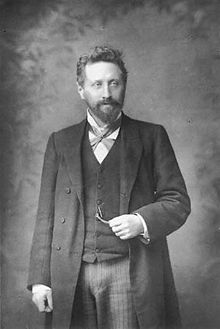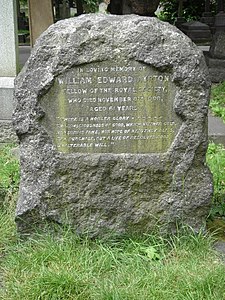Life
| This section needs additional citations for verification. Please help improve this article by adding citations to reliable sources in this section. Unsourced material may be challenged and removed.
Find sources: "William Edward Ayrton" – news · newspapers · books · scholar · JSTOR (December 2022) (Learn how and when to remove this message) |
Early life and education
Ayrton was born in London, the son of Edward Nugent Ayrton, a barrister, and educated at University College School and University College, London. He later studied under Lord Kelvin at Glasgow.
India (1868–1872)
In 1868, Ayrton went to Bengal in the service of the Indian Government Telegraph department, where he invented a method of detecting faults in lines, which was of great benefit in the maintenance of the overland communications network.Returning to England, Ayrton married Matilda Chaplin.
Japan (1873–1879)
In 1873, Ayrton accepted an invitation from the Japanese government as Chair of Natural Philosophy and Telegraphy at the new Imperial College of Engineering, Tokyo. He advised the college's architect on the design of the laboratory and demonstration rooms, and is credited with introducing the electric arc light to Japan in 1878.
Sierra Leone (1880)
Ayrton worked for several months in Freetown, Sierra Leone before returning to London. He worked in an advisory role with respects to engineering in the colony.
London
On his return to London, Ayrton became professor of applied physics at the Finsbury College of the City and Guilds of London Technical Institute, and, in 1884, he was chosen professor of electrical engineering, or of applied physics, at the Central Technical College, South Kensington. He published, both alone and jointly with others, a large number of papers on physical, and in particular electrical, subjects, and his name was especially associated, together with that of Professor John Perry, with the invention of a long series of electrical measuring instruments, including the spiral-spring ammeter, and the wattmeter. They also worked on railway electrification, produced a dynamometer and the first electric tricycle. Ayrton is also known for his work on the electric searchlight.
Ayrton died in London in 1908 and is buried in Brompton Cemetery.

